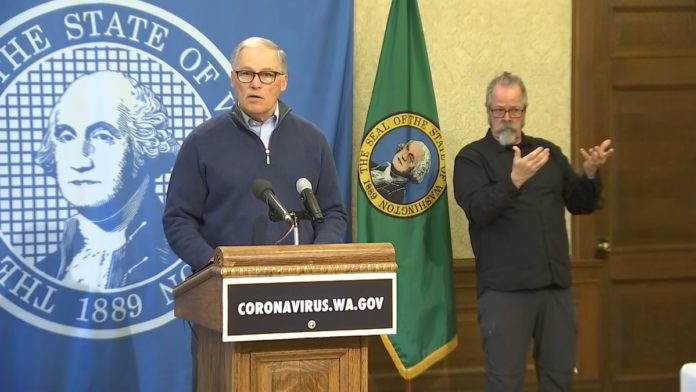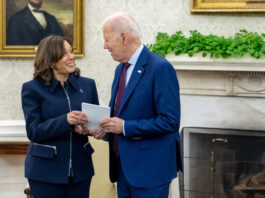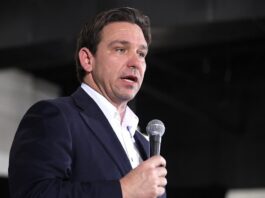As the spread of COVID-19 begins to slow nationwide, some governors are proving to be more serious than others about what comes next.
As the coronavirus spread slows, governors are responding in different, sometimes wildly divergent ways. Many of them, recognizing their states are not likely to see an outbreak on the scale of New York or New Jersey, have in recent days announced plans to loosen lockdown orders and get their residents back to work. Others have taken the opposite tack, extending lockdown orders and keeping businesses shuttered even as jobless claims mount.
The first set of governors, generally speaking, is serious about the trade-offs and tensions between protecting public health and preventing an economic collapse. They know they have to be careful about reopening their states, that they don’t yet have enough testing or contact tracing in place, and that we don’t have an effective treatment or vaccine for COVID-19. They also know that their residents and businesses cannot go on like this for months or years and that allowing people to get back to work and feed their families is also an urgent need—and at some point becomes a question of public health.
Hence, governors in Texas, Georgia, Oklahoma, Missouri, Florida, Ohio, Montana, Tennessee, Utah, and South Carolina have all announced substantive plans to allow some businesses to reopen this week, with varying restrictions remaining in place. Texas Gov. Greg Abbott on Monday announced perhaps the most ambitious plan, allowing retail stores, restaurants, movie theaters, and malls to open Friday, so long as they operate at 25 percent capacity. Abbott’s order will supersede all local orders, unlike Missouri Gov. Mike Parson’s announcement on Monday that Missouri businesses can reopen next week but local governments can impose stricter rules if they so choose.
Texas and Missouri’s changes follow more limited loosening of lockdown orders by Georgia Gov. Brian Kemp and Oklahoma Gov. Kevin Stitt last week, which were roundly criticized by the media. Defending his decision in an interview with Fox’s Chris Wallace on Sunday, Stitt noted that Oklahoma has had only 300 hospitalizations from COVID-19 with the statewide capacity for 4,600. “We think it’s a reasonable time to reopen,” he said.
It’s Time Get Real About How Long Lockdowns Can Last
The second set of governors, those who are extending their lockdown orders, are coming off as… not so reasonable. California Gov. Gavin Newsom said Monday he was still weeks away from making “measurable and meaningful changes” to his statewide stay-at-home order.
Newsom’s decision about reopening the country’s most populous state, he said, would be driven by data and “behavior”—and the behavior he saw over the weekend, with crowds of people gathering at Ventura and Orange County beaches, is just the sort of thing that will delay reopening. “We can’t see the images like we saw, particularly on Saturday in Newport Beach and elsewhere, in the state of California.”
But is it data or behavior that Newsom is relying on? Because the data show that California, a state of some 40 million people, has had fewer than 1,800 COVID-19 fatalities and currently has fewer than 3,400 hospitalizations, with Los Angeles alone accounting for about half of all fatalities and hospitalizations. Meanwhile, millions have filed jobless claims in California but the state’s overwhelmed labor agency has only been able to pay one out of every eight claims, one of the lowest rates in the country.
Other governors have even less reason to extend lockdowns. Over the weekend, Wisconsin Gov. Tony Evers extended his stay-at-home order until May 26 despite the relatively few numbers of coronavirus deaths in his state (less than 300 as of Tuesday) and a recent decline in the number of positive COVID-19 tests.
Colorado Gov. Jared Polis and Nevada Gov. Steve Sisolak said Monday they would join California, Oregon, and Washington in a Western States Pact that puts “science ahead of politics.” But politics, like science, can’t be easily ignored. Nevada has fewer than 5,000 cases and just 219 deaths, yet Sisolak has announced no plans to loosen his stay-at-home order despite protests across the state over the weekend calling on him to reopen.
Colorado has about three times as many coronavirus cases as Nevada, but Polis is allowing hair salons, dog groomers, and personal trainers to begin opening this week in some areas. Retail stores will be able to open to customers on Friday with strict social distancing rules in place, and on May 4, commercial businesses can open with up to 50 percent of employees working in-person.
In other words, the governors who are opening up their states aren’t calling for some kind of a free-for-all. If anything, they’re drawing criticism for being too cautious. Abbott, for example, has provoked the ire of conservatives in Texas for moving too slowly. In Ohio, where about 1 million residents are unemployed because of the pandemic, Republican Gov. Mike DeWine has faced protests over what critics say is a reopening plan that moves too slowly, with retail stores not set to open for another two weeks and restaurant, bars, and many other businesses still closed indefinitely.
In the coming days and weeks, expect to see a growing divide between governors willing to risk reopening and those who think their residents can remain jobless and out of work for weeks or months longer. That divide will expose leaders who are serious about the economic and social costs being borne by the vast majority of Americans, and those who are not.




